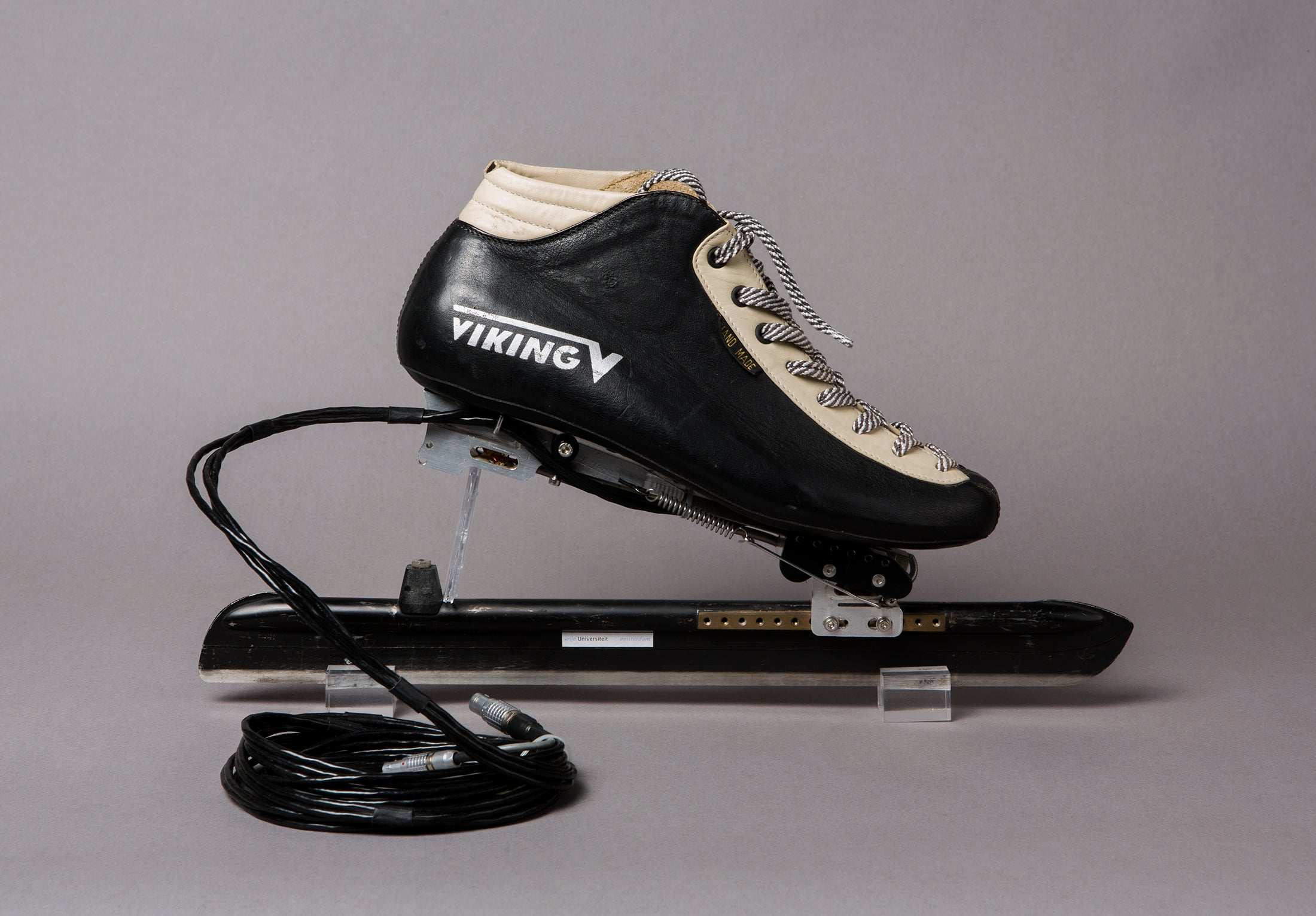Higher mechanical efficiency
The klap skate is a hinged skate that allows the leg muscles to be fully extended without the tip of the skate drilling into the ice and inhibiting momentum. Being able to stretch the calf muscles also contributes to a higher mechanical efficiency of the movement: more work can be done because more muscles are effectively contributing to the movement. Another advantage of the folding skate is that the movement becomes more natural (the stretching of the calf no longer needs to be suppressed) and can therefore be performed in a more relaxed manner.
Different measurement models and prototypes
Several measurement models and prototypes preceded the final success. One of the first measurement models, which measures the push-off force in skating, dates back to 1978. This skate still has fixed blades, as do the measuring instruments from 1985 to 1988, developed for, among other things, Jos de Koning's doctoral research. The idea of the klap skate was developed by the skating researchers of the Faculty of Kinesiology, Van Ingen Schenau and Gert de Groot, in conversation with the instrument makers Wim Schreurs and Hans Meester of the Academic Medical Center (UvA).
Courtesy of Jos de Koning, UHD Physiology, Faculty of Behavioral and Exercise Sciences VU.
